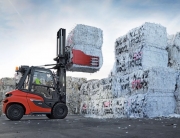So, you’re thinking about buying a power pallet truck. Great choice! These handy little machines can make moving pallets around your warehouse or job site a whole lot easier. But before you dive in, let’s get you up to speed on what a power pallet jack is and how it differs from other material handling equipment. Let’s get started:
- What Is a Pallet Truck?
- What Is the Difference Between a Manual and a Power Pallet Truck?
- Forklifts vs. Pallet Jacks: A Quick Comparison
- Frequently Asked Questions About Pallet Trucks
- What Is the Purpose of a Power Pallet Jack?
- Types of Power Pallet Jacks
- How to Use a Power Pallet Truck
- Choosing the Right Pallet Jack: Key Factors to Consider
- Summary
Looking for advice on choosing the right power pallet jack for your operations? Contact us.
Power Pallet Truck
1. What Is a Pallet Truck?
A pallet truck, or pallet jack if you prefer, is a must-have for any warehouse. It’s made up of the following
A pallet jack, or pallet truck if you prefer, is a must-have for any warehouse. It’s made up of the following key parts:
- Wheeled trolley with a handle
- Forks
- Load wheels
- Hydraulic pump
- Some linkages
Combined together, these components make it easy to move heavy loads from place to place.

2. What Is the Difference Between a Manual and a Power Pallet Truck?
Okay, so let’s break down the difference between a manual and a power pallet truck. Basically, a manual pallet jack is like the basic version, and a power pallet jack is the same thing with an electric motor added on.
Manual Pallet Jack:
Manual pallet jacks, also known as hand pallet trucks, are the most simple type. You’ve got a handle and a lever to control the forks up and down and move them around. They’re usually good for lifting up to 5,500 pounds, but some can handle even more. The downside is they’re not very tall, usually only going up to about 7.75 inches. The good news is they’re easy to fix and don’t have a lot of fancy parts.

Power Pallet Truck:
Power pallet trucks, or walkie-pallet jacks as they’re sometimes called, are basically manual pallet jacks with an electric motor. This motor helps control the hydraulic pump and makes the truck move forward and backward. Think of it like a motorcycle throttle but for your pallet jack. They can lift more weight, usually up to 6,000 pounds, and they can go higher too, around 9 inches.
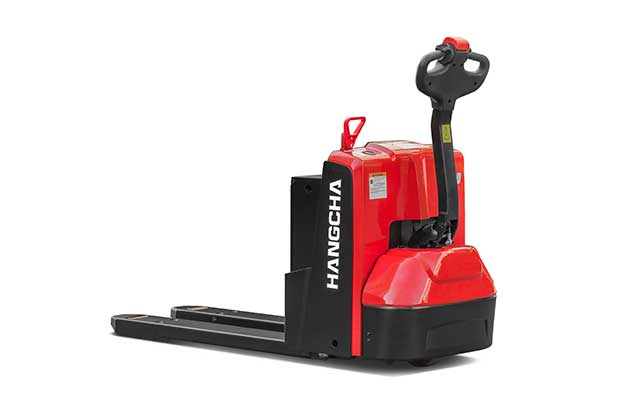
Why Choose a Power Pallet Truck Over a Manual One?
Well, they’re more productive and easier on your body. But they also cost more and need a bit more training to use. It’s really up to you which one is the right fit for your needs.
3. Forklifts vs. Pallet Jacks: A Quick Comparison
So, you’re wondering what the difference is between a forklift and a pallet jack? Well, they’re both used to move stuff around, but they’re designed a bit differently.
Forklifts: The Big Guys
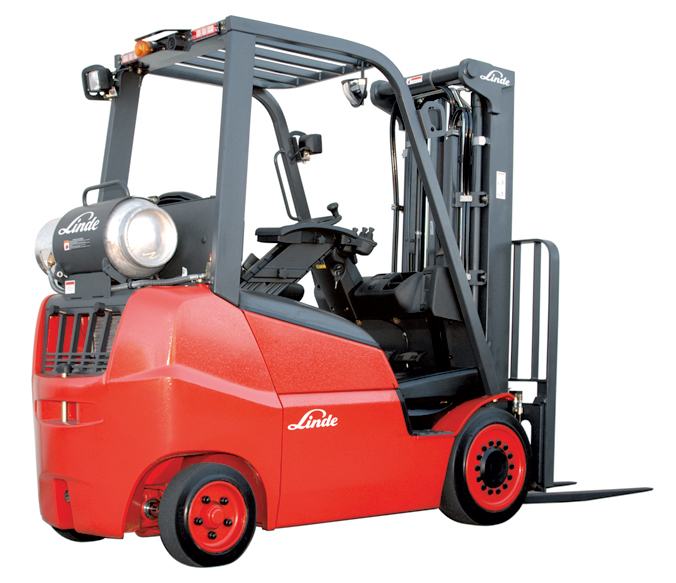
Forklifts have a counterweight that balances the load.
Forklifts are the big dogs of the material handling world. They’ve got a counterweight at the back to balance the load, and the operator sits or stands inside. They’re powered by either gas or electric motors and can lift stuff really high, like 330 inches or more.
Pallet Jacks: The Smaller, More Versatile Option
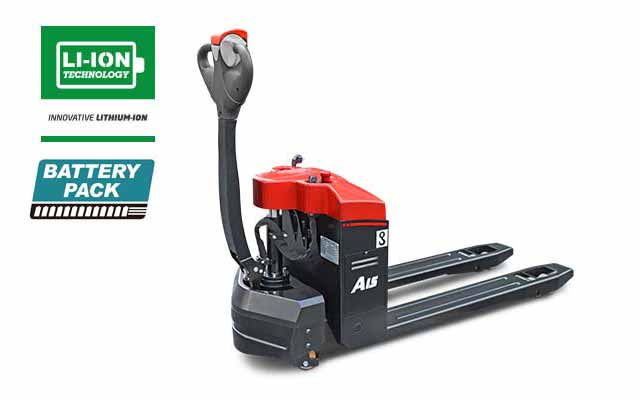
The load wheels of a pallet jack support the weight of the load.
Pallet jacks are smaller and more versatile. They don’t have a counterweight, and the operator stands behind them to control them. Some pallet jacks are manual, meaning you have to push them around. But others are powered by batteries and electric motors. Pallet jacks can’t lift stuff as high as forklifts, but they’re perfect for moving pallets around on the ground.
So, which one do you need? It depends on what you’re doing. If you need to lift stuff really high, a forklift is the way to go. But if you just need to move pallets around, a pallet jack will do the trick.
4. Power Pallet Trucks: Frequently Asked Questions

Pallet jacks were invented in 1939.
Got questions about pallet jacks? We’ve got answers! Let’s dive into some of the most common questions people ask about these handy pieces of equipment.
A) Who Invented the Pallet Jack?
The pallet jack was invented in 1939 by George G. Raymond. He was working at the Raymond Corporation and came up with this clever idea that changed the way we move stuff around. Not only did he invent the pallet jack, but he also designed the standard pallet that we still use today.
B) How Long Are Pallet Jack Forks?
Most pallet jacks have forks that are 48 inches long, but that can vary depending on the model. For example, manual pallet jacks might be shorter, like 36 or 42 inches, while electric pallet jacks can be longer, like 60 or 96 inches. Always check the specs of the pallet jack you’re looking at to see how long the forks are.
C) How Wide Are Pallet Jack Forks?
Pallet jack forks, or tines or blades if you prefer, are usually around 6 to 7 inches wide. Most of them are about 6.25 inches. Make sure the forks are the right width for the pallets you’re using. You don’t want them too narrow or too wide!
D) What Is the Standard Width of a Pallet Jack?
Most pallet jacks are usually between 20 and 27 inches wide, measured from one fork to the other. But keep in mind, that some brands or models might be a bit wider or narrower.
E) How Much Weight Can a Pallet Jack Lift?
Manual pallet jacks can usually lift up to 5,500 pounds, but some extra-strong models can handle 10,000 pounds. Electric pallet jacks are a bit stronger, starting at 4,500 pounds and going up to 8,000 pounds. So, think about how much weight you’ll be moving and choose the right pallet jack for the job.
F) How High Can a Pallet Jack Lift?
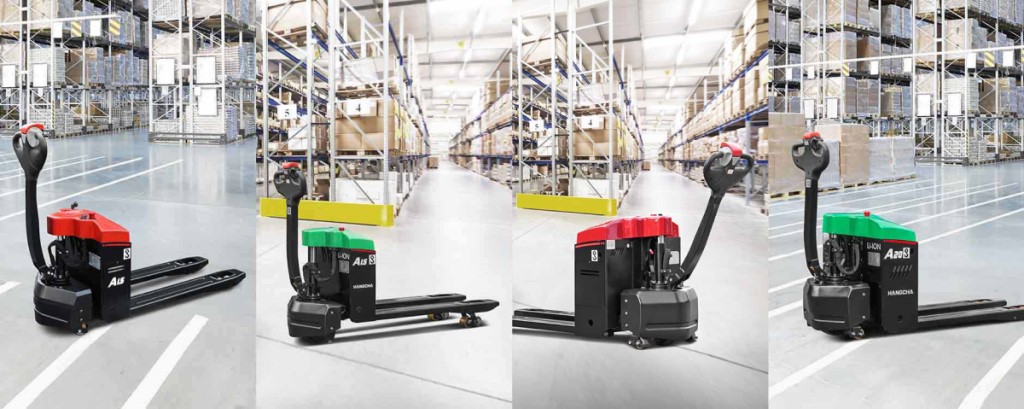
Pallet jacks are used more for moving items rather than stacking.
Pallet jacks aren’t like forklifts. They’re more for moving stuff around than stacking it up. They usually only lift the pallet a few inches off the ground. Most manual pallet jacks can lift around 7 to 8 inches, but there are some special ones called high-lift pallet jacks that can go up to 31.5 inches. It depends on what you need to do!
G) Do You Need a Certification to Operate a Pallet Jack?
Yes, you do! This requirement is mandated by the Occupational Health and Safety Act (OHSA). OHSA says that anyone who operates a powered industrial truck needs to be trained and certified. And guess what? An electric pallet jack is considered a powered industrial truck. Specifically, it’s a Class III: Electric Motor Hand or Hand/Rider Truck.
We’ve got a great article called “Steps for Getting a Forklift Certification in Ontario (not a license)” that covers everything you need to know about forklift training. Check it out!
You can take an in-person training course from Ri-Go Lift to get your certification.
So, get trained and stay safe!
H) Do Pallet Jacks Have Brakes?
Manual pallet jacks don’t have brakes, so you need to be careful when using them. Electric pallet jacks do have brakes. They’re usually a button on the handle that you press to stop the truck. It’s also called a “belly bumper” switch. This button will stop your truck and launch forward if it makes contact with you.
I) Do You Push or Pull a Pallet Jack?
You should generally push a pallet jack. Here’s why:
- Strength: Pushing is easier on your body because your legs are stronger.
- Safety: Pushing helps you avoid getting pinned against things if you need to stop quickly.
- Comfort: Pushing is better for your back and neck.
- Avoid tripping: Pushing helps prevent your foot from hitting the front wheels.
That said, pulling is okay sometimes, especially when the pallet jack is empty or you’re not moving it. But try to push whenever you can.
5. What Is the Purpose of a Power Pallet Jack?
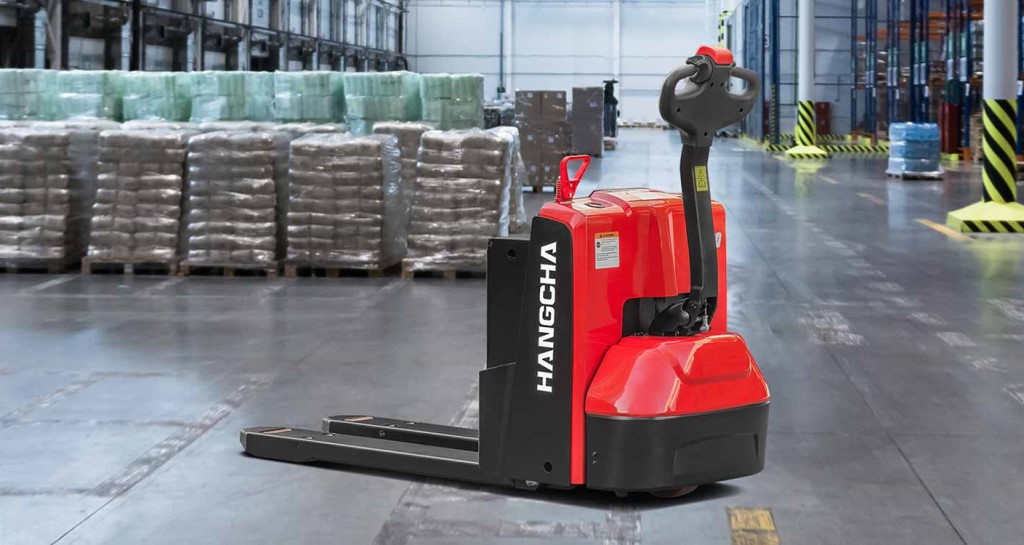
A power pallet truck will help reduce worker strain and fatigue.
Pallet jacks are essential tools for efficient material handling operations. They offer several key benefits:
Reducing Manual Labor:
Pallet jacks help to reduce worker strain and fatigue by automating the transportation of heavy loads. This improves productivity and reduces the risk of injuries.
Operating in Tight Spaces:
With their smaller footprint and turn radius compared to forklifts, pallet jacks are ideal for maneuvering pallets in tight spaces. This minimizes the risk of collisions and damage to materials or infrastructure.
Traveling Short or Long Distances:
While manual pallet jacks are best suited for short-distance travel within warehouses or stockrooms, electric pallet jacks, especially ride-on models, can be used for longer distances.
Versatility:
Pallet jacks can be used in various industries, including manufacturing, warehousing, logistics, and retail.
Specific Uses of Pallet Jacks
Pallet jacks are handy for moving stuff around, especially over short distances. Here are some common uses for power pallet trucks:
- Loading and unloading trucks: Pallet jacks are used to not only move pallets inside tractor trailers but they are also used to get pallets on and off trucks.
- Moving pallets around: They are also used to transport pallets between storage areas and shelves.
- Restocking shelves: Because of their compact size they can be used to keep grocery stores and other retail locations stocked up.
Overall, pallet jacks are invaluable tools for improving efficiency, reducing labour costs, and enhancing safety in material handling operations.
6. Types of Power Pallet Jacks
There are several different types of power pallet trucks, each with its own unique features and capabilities. Here’s a breakdown of some of the most common types:
Lead-Acid Battery Power Pallet Trucks
- Features: Traditional lead-acid batteries provide reliable power for pallet trucks.
- Benefits: Lower initial cost compared to lithium-ion batteries.
- Drawbacks: Shorter lifespan, longer charging times, and require more maintenance.

Lithium-Ion Battery Power Pallet Trucks
- Features: Advanced lithium-ion batteries offer superior performance and efficiency.
- Benefits: Longer lifespan, faster charging times, reduced maintenance, and lighter weight.
- Drawbacks: Higher initial cost compared to lead-acid batteries.

Note: The choice between lead-acid and lithium-ion batteries depends on your specific needs and budget. Lithium-ion batteries are generally a better choice for heavy-duty applications or if you require longer runtimes and faster charging times. However, lead-acid batteries may be a more cost-effective option for lighter-duty applications or if you have a lower budget.
Stand-On Pallet Jacks
- Also known as: Rider pallet jacks, ride-on pallet jacks
- Features: A platform for the operator to stand on, making them ideal for long-distance travel.
- Types: Center-rider pallet jacks (with a semi-enclosed operator compartment) and off-road pallet jacks (with oversized tires and a sturdier frame for rough terrain).

Center-Rider Pallet Jacks
- Features: A semi-enclosed operator compartment and a steering wheel for control (instead of a tiller arm).
- Benefits: Improved operator comfort, visibility, and safety.
- Applications: Ideal for long-distance travel and heavy-duty applications.

Other Power Pallet Truck Types
Off-Road Pallet Trucks
- Also known as: Outdoor pallet jacks, all-terrain pallet trucks
- Features: Oversized air-filled tires, sturdy frame, and a forklift-like lifting mechanism.
- Applications: Ideal for outdoor use on rough terrain, such as construction sites, farms, and warehouses with uneven floors.
Adjustable Pallet Jacks
- Features: Adjustable forks that can be widened or narrowed to handle different-sized pallets.
- Benefits: Increased versatility and flexibility.
Single Fork Pallet Jacks
- Features: A single fork for handling narrower loads, such as safes, ATMs, and vending machines.
- Applications: Ideal for transporting narrow, bulky items.
Roll-Moving Pallet Jacks
- Features: Angled forks designed to cradle and transport rolls of paper, metal, plastics, carpets, cords, or fabric.
- Applications: Ideal for handling cylindrical materials.
When choosing a power pallet truck, consider your specific needs and the types of loads you’ll be handling. The right type of pallet jack can significantly improve efficiency and productivity in your operations.
7. How to Use a Power Pallet Truck

Electric pallet jacks are relatively easy to operate.
A pallet jack is a simple but effective piece of equipment. It works by using a hydraulic pump to lift and lower the forks. Here’s how it works:
- Handle: The handle is attached to the hydraulic pump and is used to control the lifting and lowering of the forks.
- Hydraulic Pump: The hydraulic pump creates pressure to lift the forks.
- Wheeled Trolley: The wheeled trolley allows the pallet jack to be moved around.
- Linkages: The linkages connect the hydraulic pump to the load wheels.
- Load Wheels: The load wheels support the weight of the load.
- Forks: The forks are inserted into the pallet to lift and move it.
To operate a manual pallet jack:
- Insert the forks: Insert the forks into the pallet.
- Lift the load: Pump the handle up and down to lift the load.
- Move the load: Push or pull the pallet jack to move the load.
- Lower the load: Place the handle lever in the “lower” position to lower the load.
It’s that simple! With a little practice, you’ll be a pallet jack pro in no time.
To operate a power pallet truck:
Electric pallet jacks are pretty easy to use. Here’s a quick guide:
- Turn it on: Find the power switch or key and turn it on.
- Enter the code: Some models need a code to start.
- Adjust the handle: Pull the handle down to a comfortable height.
- Move forward and backward: Use the twist-throttle to control movement.
- Position the jack: Steer the jack into place in front of the pallet.
- Lower the forks: Press the lower button to lower the forks.
- Insert the forks: Drive the jack into the pallet.
- Avoid cross-pieces: Make sure the load wheels aren’t on a cross-piece.
- Lift the load: Press the lift button to raise the forks and pallet.
- Move the load: Use the throttle to move the pallet to where you want it.
- Lower the load: Press the lower button to set the pallet down.
- Remove the jack: Use the throttle to move the jack away from the pallet.
And there you have it! It’s pretty simple once you get the hang of it.
Watch the above video to see how to operate a power pallet truck.
How to Raise a Pallet Jack
To raise a pallet jack, first make sure the lift/lower lever is in the lowest position. Then, pump the handle up and down to lift the forks. If you’re using an electric pallet jack, just press the lift button.
8. Choosing the Right Pallet Jack: Key Factors to Consider
When selecting a pallet jack, it’s essential to consider your specific needs and requirements. Here are some key factors to keep in mind:
Workspace Layout, Environment, and Load Size
- Narrow aisles and small spaces: An electric or manual pallet jack is suitable for tight spaces.
- Wide-open spaces and long distances: A walkie or rider electric pallet jack is ideal for covering more ground.
- Outdoor work or uneven terrain: An off-road pallet jack with oversized tires and a sturdy frame is necessary.
- Varying pallet sizes: An adjustable pallet jack with adjustable forks is beneficial for handling different-sized pallets.
Lifting Capacity

Electric pallet jacks can usually lift heavier loads than manual ones.
- Manual pallet jacks: Typically have a maximum lifting capacity of around 5,500 lbs.
- Electric pallet jacks: Can lift heavier loads, ranging from 6,000 to 8,000 lbs.
- Fatigue: Consider your workload and the frequency of heavy lifting. Electric pallet jacks can reduce fatigue and strain.
Budget
- Cost comparison: Manual pallet jacks are generally more affordable than electric pallet jacks.
- Renting options: Renting a pallet jack can be a cost-effective option for short-term needs.
Battery Life (for Electric Pallet Jacks)
- Usage frequency: Consider how often you’ll be using the electric pallet jack.
- Battery type: Lithium-ion batteries generally offer longer runtimes and faster charging times compared to lead-acid batteries.
Manufacturer and Dealer
- Reputation: Choose a reputable manufacturer with a track record of quality and reliability.
- Local dealer: Consider purchasing from a local dealer for easier access to service and support.
By carefully considering these factors, you can select the most suitable pallet jack for your specific needs and ensure efficient and effective material handling operations.
9. Summary
Pallet trucks are essential tools for efficient material handling operations. They are available in various types, including manual, electric, and specialized models like adjustable and sideways pallet jacks.
When choosing a pallet jack, consider factors such as your workspace layout, lifting capacity requirements, budget, and battery life (for electric models). By selecting the right pallet jack, you can improve productivity, reduce labour costs, and enhance safety in your operations.
Need Help Choosing the Right Forklift? Contact Ri-Go.

If you are in the market for a new or used forklift, contact us. We have a wide selection and our knowledgeable staff can help you choose the perfect unit for your needs.
Since 1977, Ri-Go Lift Truck has been serving customers in Ontario and Quebec with everything they need for material handling. We are committed to providing you with quality service and a high level of customer satisfaction.
We are your authorized dealer for the following top brands:
- Linde Lift Trucks, Power Pallet Trucks, Tow Tractors and Stackers
- Hangcha – Full Line-up Including Lithium-Ion
- Blue Giant Lift Trucks and Pallet Movers
- Komatsu Forklifts and Reach Trucks
- Mariotti Lift Trucks – The Worlds Smallest Lift Truck
- Baoli Lift Trucks
- Advance Sweepers and Scrubbers
- Skyjack Genie Booms and Scissor Lifts
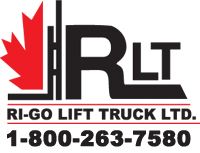
In addition to our authorized distributorships, we can also provide you with:
- Large selection of used forklifts
- Operator Training Department – open 7 days a week
- Parts Departments – over $1.9 million dollars of parts on hand for all makes and models
- Service Department – highly trained technicians
- Leasing and Rentals
No matter what your material handling needs are, we can help. Contact us today to let us know how we can be of service.
What Our Customers Think…
“Great team, friendly and responsive. Looking forward to a long and prosperous business relationship.” -Frank Gregoire





